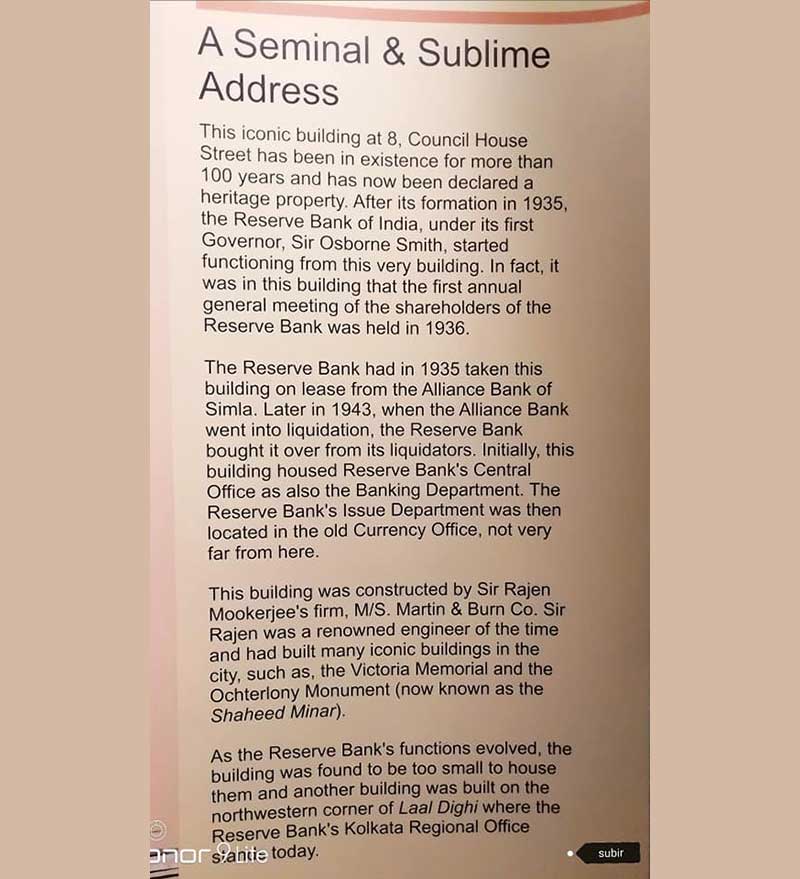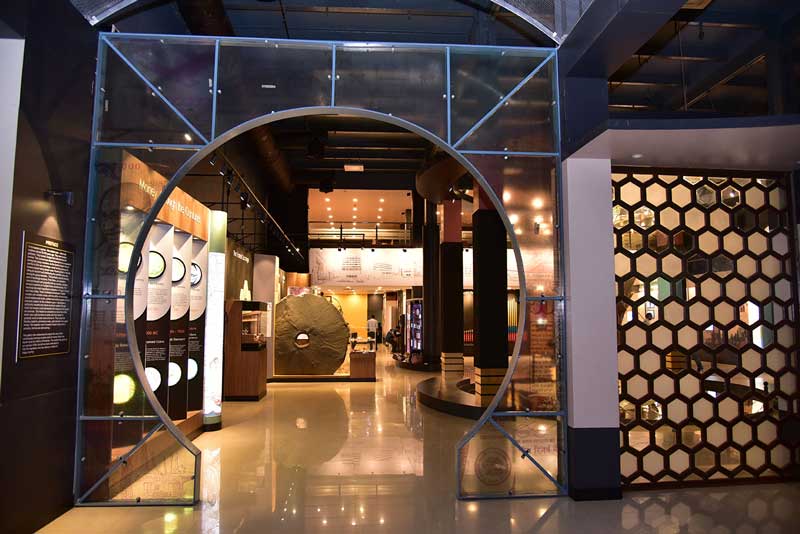
Located at 8 Council House Street, just opposite to St John’s Church, the red and white building with the name of Reserve Bank of India inscribed on it, once housed the Alliance Bank of Simla. Considered as one of the oldest banks in India, the Alliance Bank of Simla, a British-run and India- registered bank, started functioning from Shimla in 1874 and opened its Calcutta branch in that building on 15 October 1889. The building, sandwiched between Hong Kong House and The National Insurance Building, was constructed by Martin Burn & Company, founded by Sir Rajendra Nath Mookerjee and Sir Thomas Acquin Martin, who constructed many iconic buildings in the city.
Unfortunately, due to massive undue speculation by its management, the Alliance Bank of Simla had to face an acute financial crisis, from which it could never revive. Ultimately, it ran out of cash and had to be shut down on 27 April 1923. After the bank failed, the Imperial Bank of India, the predecessor of Reserve of India, was instructed by the Governor General of India to pay up to fifty percent liability of the Alliance Bank of Simla. Consequently, as the Imperial Bank of India intervened to help recover some of its investors by acquiring assets of the bank, it automatically became the owner of its building on Council House Street.

As per the Reserve Bank of India Act of 1934, RBI started its operation on the 1st day of April 1935, to control the banking sector and regulate the finances. Initially, the building of the Alliance Bank of Simla was used as the central office of RBI, along with the Banking Department, while the Currency Building, located on the southeast corner of Dalhousie Square, housed the Reserve Bank’s Issue Department.
During 1950’s, the new massive building of RBI, Calcutta came up to replace the old Custom House, but several departments continued to function in the old office of 8 Council House Street. Today, it serves as the Zonal Training Centre of RBI. However, the lower floor of the building was converted into a museum in 2019, exhibiting the Story of Money.


To create an attractive and interesting atmosphere, the walls of the museum area are decorated with shredded note design and the pillars contain a collage of discarded coins. Apart from that, a twelve feet high installation art stands at the centre of the ground floor, depicting the evaluation of money, which starts from coins and notes evolving into the online transfer of money and finally ends into crypto currency, a digital asset designed to work as a medium of exchange that uses strong cryptography to secure financial transactions.
